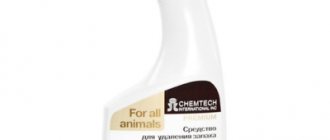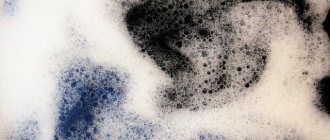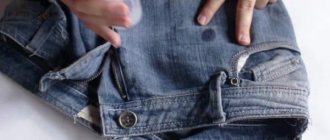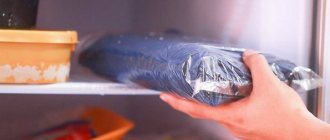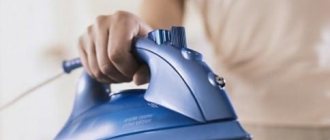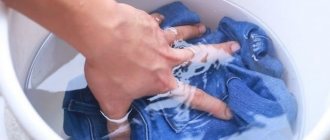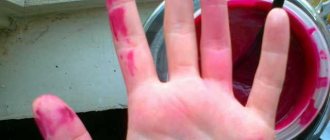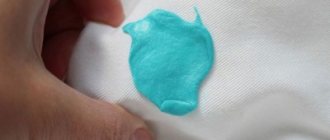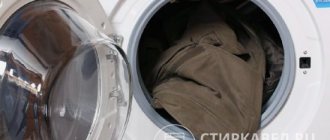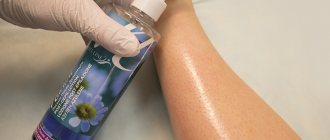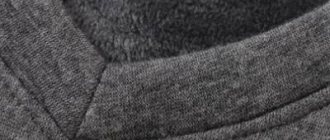It's a good thing, but there's a stain on it? What to do? How to remove a greasy stain from clothes or trousers? The first thing to do is to determine the type of pollution, that is, what we managed to decorate ourselves with. What type of greasy stain on clothes have we “awarded” ourselves? In the future, this will help to remove it with minimal losses. Or maybe even no losses at all.
Causes of traces of fat
Synthetics, textiles or other porous materials get dirty when in contact with a greasy product.
What causes spots to appear:
- from oil (butter, vegetable, essential, machine, massage);
- creams, face masks, other cosmetics;
- confectionery sweets;
- lard, lamb or other fat;
- medicinal products containing oils, esters, fats;
- other fatty foods and products.
More often, fatty substances get on clothes during food or cooking. Often the fabric becomes soaked from the body after treating the skin and becomes dirty from touching a dirty surface or hands.
If the stain was planted a long time ago
If you didn’t notice in time that your clothes were dirty, or you were simply too lazy to take action right away, then removing the grease stain will be more difficult. There is no need to despair; there are methods that will help you cope with the problem. But before using aggressive products, you need to make sure that they are safe for the fabric.
Petrol
Refined gasoline is required, for example for lighters. The method is suitable for knitwear , cotton, linen. You can use gasoline to clean wool trousers, but only in dark colors. You only need to clean from the inside out:
- A gauze or cotton swab is moistened with gasoline and gently wiped from the edges of the stain to the center.
- Then the item is washed.
- After washing, air dry to remove the smell.
Solvent for cosmetic varnish
Acetone can be used. In particular, it allows you to quickly remove fat and oil from pants made of thick cotton-based material. This method is not recommended for delicate fabrics.
To remove a small stain, you can drop the liquid directly onto the fabric. In other cases, a white cloth or a thin layer of cotton wool is moistened with acetone and placed on the traces of oil. After half an hour, the item is washed in the usual way.
Vinegar, salt and mustard
To remove old grease stains, they also make a handmade stain remover. Required:
- mustard powder;
- finely ground salt;
- vinegar 9%;
- some water.
Spices are mixed in equal proportions and enough water is added to obtain the consistency of toothpaste.
How to use:
- The paste is applied to the stain and left for 3-4 hours.
- Then the item is rinsed under running water.
- Wash and dry as usual.
- If the stain is not removed, the operation must be repeated.
Ammonia
Ammonia can be used to clean light and white fabrics; dark ones may leave stains.
Prepare a solution at the rate of 1 tsp. ammonia per 100 ml of water. The product has a pungent odor, so work with it only with the hood on or the windows open. The swab is moistened in the solution and the stain is wiped.
This method is good because it not only removes traces of oil, but also removes the smell. For example, if clothes are stained with fish oil. After using ammonia, you need to wash the item with 2-3 additional rinses. It is better to dry outdoors.
So, in most cases, you can remove oil stains at home yourself. But it’s better not to put the matter off for a long time, but to treat the area of contamination immediately. If the item has been lying around for some time, it will be more difficult to clean it; you will need to use more active products that are not always safe for fabrics.
Folk methods and means for removing grease stains
Clothes are cleaned with any sorbent products or fat-breaking agents.
There are 3 ways to quickly remove stains:
- the greasy mark is generously sprinkled with sorbent powder, covering the adjacent clean area, heated with an iron, and cleaned off with a brush;
- rub a foamed fat-dissolving agent into the stain, leave for 5–15 minutes, and wash;
- the stain is soaked in glycerin, left for half an hour, wiped with a bandage, and washed.
After cleaning, it is recommended to wash clothes.
Laundry soap
72% laundry soap in combination with other products will remove fats faster.
Method for cleaning grease stains:
- Rub with a grater 0.5–2 tbsp. l. soap shavings.
- The shavings are dissolved in water at a temperature of 40–70 ºC (depending on the material of the clothing).
- Rub the greasy stain with the paste, pour sugar on top, and rub with a toothbrush.
- The clothes are wrapped in a bag for 30 minutes.
- They wash it.
Sugar can be replaced with moistened mustard powder.
Salt and soda
Table salt and/or soda is used in dry form or in the form of a solution.
Methods for removing grease stains:
- dilute 150–200 g of salt in a liter of hot water, dip the contaminated area of clothing into the liquid, and leave until the greasy stain is completely dissolved;
- the oily area is moistened and sprinkled with a mixture of 20 g of soda + 20 g of salt, left for an hour;
- Place a sheet of paper with salt/soda sprinkled under the stain and pour it on top of the greasy mark, leave until the powder becomes oily, and brush off (do up to 5 times).
At the end, the clothes are washed in a solution of laundry soap.
Turpentine
For cleaning you need 2 bags and cotton pads moistened with a mixture of 20 ml of turpentine + 20 ml of 10% ammonia solution (ammonia). Place a bag and a soaked disc under the greasy stain. A second cotton pad is placed on top and covered with film. After 180 minutes, the clothes are washed.
Plot to watch:
Ammonia
Suitable for light-colored materials: ammonia discolors. The greasy stain is soaked in a 10% ammonia solution. Clothes are washed after 10 minutes.
For white clothes, instead of ammonia, hydrogen peroxide is used. Saturate the oily area with a 3% solution, and wash the stain off after a quarter of an hour.
Vinegar
Suitable for any fabric, including organza, chiffon. Use table vinegar or an aqueous solution of acetic acid 6–9% in a mixture with other components.
A quick cleanser for greasy stains:
- 20 ml water;
- 100 ml vinegar;
- 15 g salt;
- 15 g mustard.
Saturate the dirt with the mixture, rub it in with a brush, and wash it off after 20 minutes.
Starch
Use corn or potato starch. The powders are mixed with milk to a paste, rubbed into the oily area with a brush, and left to dry for 12 hours. Next, the crust is washed off under the tap and the clothes are washed.
Watch the video:
Chalk
Use calcium gluconate tablets, white cosmetic clay or school chalk. The product is crushed into powder and generously sprinkled on the greasy area (paper is placed under the stain). After 8–12 hours, the clothes are washed with 72% soap.
Dentifrice
For light-colored clothing, use any white tooth powder. For black fabric, products with black clay or activated carbon can be used.
Application algorithm:
- The powder is poured onto the greasy stain in a layer of 3–5 mm.
- Cover with paper.
- Heat strongly with a hot iron.
- The powder is removed from clothing with a brush.
Cleaning is done up to 5 times. It is advisable to wash clothes.
Talc
Use medical or light cosmetic talc or baby powder. The powder is applied to the stain, covered with paper, and pressure is placed on top. After 2 hours, the greasy talc is removed. The procedure is repeated 2-3 times.
Dishwashing liquid
Fairy or any other gel, paste or detergent for kitchen utensils is suitable. Saturate the greasy area with undiluted liquid, cover it with a bag, and wash it after a quarter of an hour.
Detergents will be replaced by Sprite and Coca-Cola. Grease stains are soaked for 180 minutes, then the clothes are washed.
Shaving foam
The product is rubbed into the oily area and left for a quarter of an hour. Clothes are washed with soap.
Gasoline and alcohol
Gasoline (as well as acetone) is used to treat materials that are resistant to its action. Rub the oily area from the edges to the center with a swab soaked in the product for 3–15 minutes. The treated stain is washed with soap. Clothes are dried outside.
Gasoline will replace medical alcohol. A napkin/tampon is soaked in it, applied to the greasy stain, and covered with film. After 90 minutes, the clothes are washed.
Shampoo
Use shampoos to care for oily hair. The product is foamed onto the stain, the clothes are placed in a bag for an hour, then washed.
Toothpaste
The cleaner works faster when combined with baking soda. Mix the paste and powder equally, rub the mixture into greasy stains, leave for up to a quarter of an hour, and wash.
Watch this helpful video:
Features of removal depending on tissue
Before you begin removing grease stains, it is very important to determine what material the trousers are made of (information is indicated on the tag). This determines how quickly traces of grease disappear and whether your favorite item will retain its original appearance after cleaning.
The easiest way to remove greasy marks is from abrasion-resistant raincoat fabric. Alternatively, rub the stain with chalk or starch, leave it for at least six hours, after which the item is sent for washing.
Trousers made of wool and light cotton fabrics require gentle, delicate handling . Liquid dish detergent will help remove greasy marks. Using a soft toothbrush, rub the dirt on both sides with detergent and leave it alone for two to three hours, after which the trousers are washed as usual.
Trousers made from natural fabrics are cleaned of traces of fat using shaving foam. It is enough to treat the dirt with foam, and after five minutes you can wash the stained trousers a second time.
When removing grease stains from jeans, you should avoid:
- active friction,
- alcohol-containing compounds,
- kerosene.
As a result of such cleaning, a bald spot or even a hole may appear in place of the stain on the gins.
Alternatively, dishwashing gel will help remove greasy stains on jeans. It is enough to apply a few drops of detergent to the stain, foam it and after five minutes remove it with a damp sponge.
If the fabric composition is not indicated on the tag, you can determine it by the type of trousers . So, sweatpants are most often made from synthetic materials (polyester, microfiber).
To sew classic office trousers, mixed fabrics are used (wool or cotton with the addition of polyester threads), and for jeans, natural cotton fabrics with the addition of elastane are used.
Special products for removing greasy stains from household chemicals
Oily stains can be removed with products containing enzymes, active oxygen, and surfactants.
Household chemicals are used according to the instructions on the label.
The best stain removers:
- Dr powder Beckmann Oxy Magic Plus;
- dry bleach Clean Home Express effect;
- liquid Vanish Gold Oxi Action Pink;
- Pip aerosol with cleaning probiotics.
There are features for removing stains. Vanish is rubbed over their surface or Pip is sprayed or a paste is applied (powders are mixed with water). Then wait a while and remove from clothing according to the conditions on the product label.
How to clean denim pants
Most people prefer to do car repairs in denim pants, so this fabric is more likely to be contaminated by machine oil. To remove stains from this type of clothing, it is recommended to use a mixture of turpentine and ammonia. The liquids are mixed in equal quantities and mixed well. The resulting product is applied to the contamination. The mixture is left to act on the stain for 15-20 minutes, after which the pants should be washed with soap or powder. It should be noted that turpentine has a fairly persistent specific odor, which can be removed by using fabric softener.
You can remove fresh oil stains from pants by hand washing. To do this, rub the stain with laundry soap and leave for a few minutes. Next, the pants need to be washed, paying special attention to the stained area.
You need to remember that it is much easier to remove an oil stain from your pants when it is fresh. Therefore, you should not throw away a damaged item, since it can be restored to its original appearance. To do this, you should use one of the listed methods, which have repeatedly proven their effectiveness.
It doesn’t matter if yellow stains appear on your down winter jacket after an unsuccessful wash. To cope, It happens that you have to wash vomit stains from upholstered furniture or clothing, and, It is very difficult to clean a mattress from red stains and the smell of urine, but there are methods. You can, Removing stains is always a long and labor-intensive process, especially if it concerns traces of food or
Basic rules for removing grease stains from fabrics and other surfaces
The fatty substance quickly saturates the porous surface. The stain is difficult to remove from the depths of the fibers within 5–6 hours from the moment it appears. It is also difficult to remove if household chemicals or folk remedies are not suitable for cleaning the soiled material.
The faster measures are taken to remove a fresh stain, the easier it is to remove the greasy mark.
Before removing stains, test the color fastness of clothing:
- On the wrong side of the garment, moisten the seam or hem. Then rub the wet spot with a white cloth: if it is stained, the pigment is not stable.
- On the reverse side of the garment, the color fastness to the stain remover is checked. It is applied directly to the fabric or rubbed onto the material with a dampened swab, and washed off after a while.
If the color of clothing is unstable, remove the greasy stain with vinegar, saline solution, Coca-Cola, 72% soap, shaving foam, mustard, and products for colored fabrics.
How to remove greasy stains from different types of clothing and fabric:
| Product type | What is removed? | What not to do |
| From bologna jackets From sweatpants From synthetics From cotton | The contamination is steamed, moistened, rubbed with mustard paste, and left for 90 minutes. | Use chlorine-containing products |
| From down jackets From the upholstery From a T-shirt From tulle From the carpets | Sprinkle with a mixture of chalk and talcum powder and cover with paper. Place a weight on top for 8 hours | |
| On the coat (collar and sleeves greasy) | Wipe with hydrogen peroxide | |
| From a silk blouse From organza With lace From the car seat | A greasy stain from silk or other fabric is wiped with glycerin and blotted with gauze after half an hour. | |
| From raincoat fabric From stretch products, jeans | Fairy is poured onto the grease mark, foamed, left for 15 minutes | |
| From knitted clothes From colored clothes | Soak in vinegar or alcohol | |
| Wool stain | Tinder with purified gasoline |
Clothes are washed after treatment with soap, mustard, talc, glycerin, Fairy, gasoline, alcohol, vinegar. Remove hydrogen peroxide or stains from furniture upholstery with a damp cloth or steam cleaner.
Oils from concrete and paving slabs are burned off with an open flame. Grease stains are heated with a portable gas burner until they are completely evaporated.
Fats from kitchen towels or stains from a tablecloth (plain, natural) are removed by boiling for 5 minutes in a soap-soda solution and washed. The oils will disappear from the curtains after soaking in water with soap + soda and then washing.
A mixture of talc and starch is used to clean fat:
- from any paper;
- from printed publications;
- from documents;
- from the page of the book.
Place a paper napkin under the oily sheet and on top + pour the mixture, press it on top with a weight. After 2 hours, the powder is replaced. The product is used 2–4 times.
A steam cleaner removes fats:
- from non-washable wallpaper;
- from the kitchen hood;
- from the walls;
- from clothes;
- from the sofas.
Place a flat or brush attachment on the device, steam out the dirt and immediately blot it with a dry cloth.
Cleaning grease from unpainted wood and parquet:
- Mix cosmetic clay/chalk with vinegar to form a paste.
- The mixture is applied to oily areas and left for 24 hours.
- Remove the product from the wooden surface with damp foam rubber.
Greasy fingerprints, greasy stains and other stains can be removed with a moistened melamine sponge.
She will clean:
- frosted glass;
- marks from laminated surfaces and doors;
- stains from hard furniture, from doors.
The crumbs of the melamine sponge are brushed off and the coating is wiped with microfiber.
Use lemon or onion juice to remove fats:
- from a leather bag;
- with leather shoes;
- from other products with smooth leather.
Moisten the stain with juice and wipe with a cotton pad.
Recipe for cleaning grease from nubuck or suede clothes/shoes:
- 10 g soap shavings 72%;
- 20 ml of ammonia solution;
- 20 ml turpentine.
Soak the greasy stain with the mixture, steam it, and wash it off with water.
Application of special compounds
If available methods are powerless in the fight against greasy heels on trousers, special products (sold in hardware stores) will come to the rescue.
To make sure your purchase meets your expectations, you need to study all the information on the packaging . Particular attention is paid to what stains and what types of fabrics the selected product is recommended for. It is also necessary to check the expiration date of the product.
TOP 3 most effective special products in the fight against grease stains on trousers:
Spray K2r
Spray K2r - powder stain remover will remove greasy and oily marks from fabric in a matter of minutes . Easy to use: just treat the stain, wait two minutes and brush off the powder that has formed on the fabric along with the grease particles.
Suitable for all types of fabrics (natural, synthetic, delicate wool and silk). After application it does not leave streaks on trousers. The average cost is 550 rubles. (volume 100 ml). Read reviews here and here.
Edelstar pencil from Faberlic
Edelstar oxygen pencil from Faberlic. A balanced formula based on an oxygen agent allows you to quickly remove stains from fabric (and other surfaces):
- fat,
- soot,
- rust.
Compact and easy to use. Used both for local stain removal and for pre-treatment of stubborn stains before the main wash.
Method of application: stains on the fabric are moistened with warm water, then rubbed with an Edelstar pencil from Faberlic until foam appears. After fifteen minutes, the treated area of the trousers is washed off under running warm water. The average cost is 200 rubles. (pencil weight 35 g). You will find reviews here and here.
Antipyatin stain remover soap
Active enzymes from bile and natural enzymes remove greasy traces from any type of fabric without residue. It is enough to moisten the stain with water, rub with soap and after fifteen minutes, wash off the resulting foam under running water.
High efficiency and affordable cost (on average 60 rubles) make Antipyatin soap a very popular remedy in the fight against old, ingrained grease stains on fabric. You will find reviews here and here.
Before using any special product, it must be tested on an inconspicuous area of the trousers.
It is strictly forbidden to mix stain removers from different manufacturers . The results of such experiments are unpredictable.
How to remove old greasy dirt at home
Before cleaning, steam the stained area. The area with an old greasy mark is treated with a steam cleaner or held for 10 minutes over the spout of a boiling kettle. Afterwards, clean with a commercial or homemade stain remover.
Working anti-fat agents:
- a mixture of ammonia and glycerin (1:1);
- a mixture of starch with hot milk (mix to a paste);
- stain remover gel concentrate Sodasan Spot Remover (with sponge brush).
It is recommended to treat greasy stains on the front and back of the clothing. A film is placed under it so that the product does not discolor or stain the clean fabric. The stain remover is applied to the problem area, left for 10–20 minutes (starch paste is kept for 6–12 hours) and washed.
See review:
Adviсe
Recommendations from experienced housewives will help clean grease stains from trousers very quickly , without deforming or changing the color of the fabric:
Before you begin removing stains, it is very important to study the care information for trousers indicated on the manufacturer's label.- The choice of method for removing greasy marks depends on the type of fabric and how long ago the stain appeared on the trousers.
- The process of removing grease stains begins with the most gentle means at hand, gradually (if necessary) moving to aggressive chemical compounds.
- The grease stain is treated locally with a cleaning composition, being careful not to touch the clean fabric of the trousers. The greasy mark is carefully cleaned, starting from the edges, smoothly moving towards the middle.
After local cleaning of grease stains, trousers should be washed as soon as possible. This will help avoid worn-out and blurry marks and preserve the original appearance of your favorite item.
Important and useful information about methods and means of removing grease stains from various surfaces is presented in this section.
How to remove a newly planted stain
Immediately, the dirt on the front side is generously sprinkled with any fat-absorbing powder and rubbed into the fabric (a folded towel is placed on the back side). Soda, chalk, salt, dry mustard, flour, starch, talc are suitable. After oiling, they are cleaned and the clothes are washed with soap.
Other cleaning methods:
- from black and colored fabrics - the stained area is soaked in Coca-Cola for 3-4 hours, then the clothes are washed;
- from white clothes - the surface is covered with white clay, covered with paper napkins, any weight is placed on top, after 6-8 hours the powder is cleaned off;
- from a sweatshirt (knitwear, cotton, other natural fabric) - soak the oily area overnight in alcohol or saline solution.
If the mark remains, repeat the procedure 2-3 times or change the product or use a stain remover.
The nuances of cleaning sports and dress pants
Classic office trousers require delicate handling . Such items cannot be cleaned with chlorine-containing compounds or gasoline (trouser fabric sheds a lot). Steam cleaning is also prohibited (high temperatures cause the fabric to shrink and smooth out the creases on dress pants).
In order to get office trousers in order, grease stains are first rubbed off with laundry soap or covered with salt, and then sent to the wash.
Cleaning sweatpants from grease stains is much easier. This type of clothing is made from wear-resistant fabrics that can withstand washing with any powders and stain removers.
The easiest way to clean sweatpants from greasy stains is to use special chemical compounds called stain removers.
How to remove stains from clothes that have already been washed
Long-standing stains are removed with a high-quality commercial stain remover or gasoline. They wipe the problem area until the stains are completely eliminated. Then the clothes are washed with a soap-soda solution.
Recipe for a 2% soap-soda solution for washing:
- 1 liter of boiling water;
- 20 g baking soda;
- 20 g of grated laundry soap 72%.
Soap shavings are dissolved in boiling water, soda is added, mixed and removed from the stove. Use after cooling.
Stain remover recipe for washed items:
- ammonia solution 10% - 10 ml;
- glycerin - 10 ml;
- water - 10 ml.
Saturate the stained area with homemade stain remover and cover with a bag for 10 minutes. Then the clothes are washed with a soap-soda solution.
More ways:
General rules
In order to avoid completely ruining the item while experimenting with stain removal, it is important to be careful. The problem with purchased products is that they are often too aggressive, and while working to remove stains, they spoil the fabric, leave marks on clothes, and sometimes tears. Therefore, the only condition is to take precautions:
- to remove stains on knitwear without loss, try the product on a spare piece of fabric;
- if after purchasing you did not save a piece of fabric, apply the chemical to the place where the consequences of its work will not be visible - on the hems at the seams on the inside of the item;
- stain removal should begin with a weak solution, and if it does not work, gradually increase the concentration;
- To remove stains from knitwear, you need to start from the area around it, and then move to the edges and the middle of the stain;
- For cleaning, use a soft light cloth or cotton pad.
And one more important tip: do not iron things with stains. The temperature effect will only improve the penetration of dirt into the fabric, which means it will aggravate the situation and complicate the task of eliminating it.
Basic steps to combat grease stains on clothes and furniture
Wear rubber gloves when handling household chemicals, stain removers, and gasoline. The resistance of the material and color to the product is tested before using it on the seams on the inside of the garment. Be sure to place a rolled up towel or bag under the greasy stain.
It is important to remove any fresh contamination immediately. To clean clothes, curtains, furniture and other products, it is recommended to buy a steam cleaner or steam vacuum cleaner. It is advisable to keep a universal stain remover, glycerin or other effective product in the house.
How do you deal with greasy stains? Comment and share the article on social networks. Save the publication to bookmarks so that useful tips are at hand at the right time. All the best.
How to remove a fresh trace?
It is possible to quickly and efficiently clean trousers from grease stains before the fat molecules have time to penetrate the fibers of the fabric. As experienced housewives and dry cleaning specialists suggest, a greasy stain is best cleaned in the first three hours after it appears on clothing.
So, the first thing to do as soon as a drop of fat gets on your pants is to sprinkle it with salt. The grains will absorb particles of fat, and very soon there will be no trace left of the contamination.
You can also use fresh bread crumbs as an absorbent . A small piece of crumb is applied and pressed firmly onto the fresh greasy stain. As the fat is absorbed, the bread is changed.
If you don’t have salt or bread at hand, wet antiseptic wipes will come to the rescue (they contain alcohol, which effectively breaks down fat molecules). The greasy mark is blotted with a damp cloth until it disappears completely.
